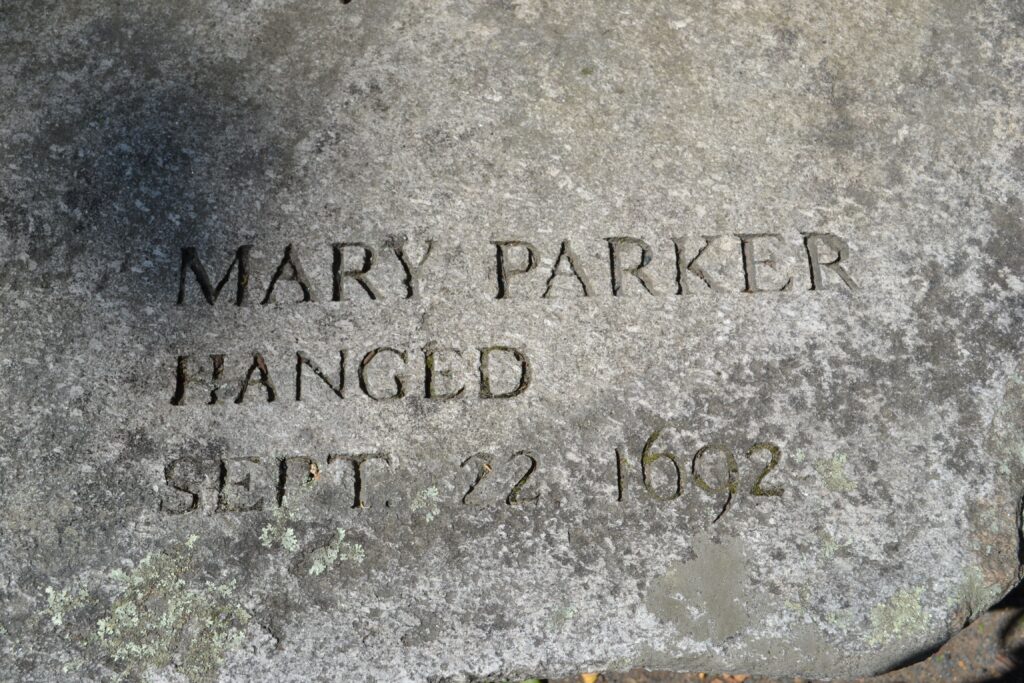Mary Parker was a widow who was accused of being a witch during the Salem Witch Trials. She would be involved in the last string of executions of the trials due to the use of spectral evidence.
Parker had lost her husband in 1685 and was 55 years of age at the time of her execution. She seemed to be an easy target for her accusers.
Jump to:
Family Life
There is little known about Mary Parker's early years and family life.
She married a widower named Nathan Parker, and the couple went on to have nine children together:
- John Parker
- James Parker
- Mary Parker
- Hannah Parker
- Elizabeth Parker
- Robert Parker
- Sarah Parker
- Peter Parker
- Joseph Parker
Infant and childhood death was common, so some of her children probably did not live until adulthood. One of her sons, James Parker, died in 1677 during King Philips War which the colonists fought against Metacomet and the Wampanoag Tribe.
When her husband passed away, he left his large estate and wealth to his wife and remaining children.
Trial of Mary Parker
Mary Parker seemed to be a respected member of the community and did not have any prior run-ins with the law or neighbors. It is unclear as to why she was targeted. However, she did receive some land after the death of her husband, who seemed to be a wealthy landowner, and it seems in later years, some in the community may have been targeting the land owned by the family.
Despite seeming to be a good citizen, most of Parker's family would also be accused of witchcraft.
The first person to bring Mary's name to the court was William Barker Jr., who was 15 years old. In his accusation, he said “that there were of his company Goody Parker, Goody Johnson, Samuel Wardwell & his wife and two daughters.” this would also incriminate Samuel Wardwell, who would also eventually be executed during the Salem Witch Trials.
After the accusation, Mary was put in front of the Magistrates Judge Bartholomew Gedney, Judge John Hathorne, and John Higginsons, where she would be examined.
The moment that Mary's name was mentioned, the young "afflicted" girls predictably fell into fits and would only stop when Mary Parker touched them. This is an example of spectral evidence being allowed in the courtroom and why it was so difficult for the accused to protect their innocence.
During her examination, Mary maintained her innocence. Despite this claim, another accuser stepped forward, Mary Warren, who also threw herself into fits and would only stop when she was touched by Parker.
The ridiculous trial would go on, and despite only two people testifying against Mary and her maintaining her innocence, she was sentenced to hang.
She, along with seven others, including another Parker, perished on September 22, 1692:
- Martha Corey (September 22, 1692; wife of Giles Corey)
- Mary Easty (September 22, 1692)
- Alice Parker (September 22, 1692)
- Ann Pudeator (September 22, 1692)
- Wilmot Redd (September 22, 1692)
- Margaret Scott (September 22, 1692)
- Samuel Wardwell Sr. (September 22, 1692)
This would be the last of the executions of the Salem Witch Trials.

To learn more details of the Trial of Mary Parker, I recommend the article in the History of Massachusetts Blog.
